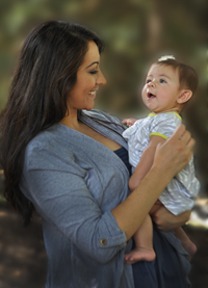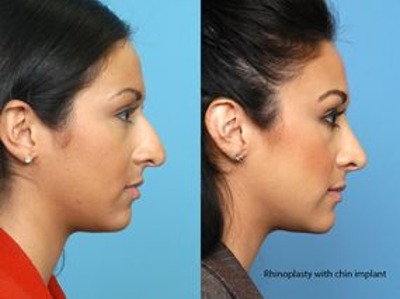
The look of today’s re-sculpted nose has changed from past years and so have the surgical techniques used to reshape it. Today’s nose has a stronger, more elegant bridge, is longer and is less turned up than what used to be popular. And, noses are not nearly as “cookie cutter” in shape as they once were. The nose should be more natural. Today’s beautiful nose is much more unique than it used to be. Your nose should be individualized to fit your face and a person’s ethnic background should not be lost. Because our society has become so multi-cultural, we are performing Rhinoplasty on patients with many ethnic backgrounds.
In addition to the actual look of the nose, Rhinoplasty (nose reshaping surgery) techniques have changed over the years and have dramatically improved patients’ results. In the past, Rhinoplasty was often times performed removing too much of the bone and cartilage, which caused complications in many patients. Today, surgeons are learning newer updated skills that allow instead for “reorientation”, which maintains the normal existing structure of the nose and involves more sculpting and reshaping rather than excessive bone and cartilage removal. With older techniques, you see problems such as “polly beaks” due to excessive bony hump removal or points or knobs on the tip of the nose from excess removal of tip cartilage. Pinched or collapsed nostrils are also problems that can occur with less experienced surgeons.
These newer surgical techniques, which maintain and support the structure, are also more refined and delicate. Therefore, many patients experience little to no pain or pressure, minimal bruising, and nasal packing has become a thing of the past.
What Should You Expect From a Properly Performed Rhinoplasty?
Your nose should work in harmony with the rest of the face, look natural and not appear “operated”. Initial results should be apparent as soon as the splint is removed within a week of surgery, even with normal swelling. Rhinoplasty outcome is the most-challenging cosmetic surgery to predict the healing results and requires the most skilled and trained surgeon of any facial plastic surgery procedure. Patients should notice results immediately, however, it will take a full year or longer to see the final result due to small amounts of swelling in the skin that resolves over time. It just depends upon each individual’s tissue structure.
If you are considering this procedure, Dr. Perkins (an internationally recognized and invited teaching surgeon who has been Past President of the American Academy of Facial Plastic and Reconstructive Surgery) suggests most importantly that you find a board certified facial plastic surgeon who regularly performs this surgery and is utilizing today’s updated techniques. And, he suggests going to someone who utilizes computer imaging – so that patients can see their expected result before they undergo the procedure. While it does not provide exact details, it’s a tool that provides an illustration of the projected outcome. Following is an example of “before and after” imaging photos of a Dr. Perkins patient.

Rhinoplasty requires someone who has the ability to sculpt and reshape the nose – it’s where art meets science. Before choosing a surgeon, you may wish to look at several sets of his/her before and after rhinoplasty photos. If they cannot provide these for you, keep searching for a surgeon who can.